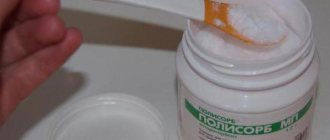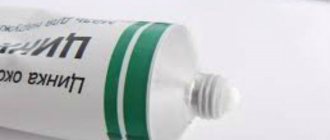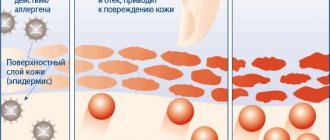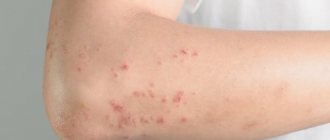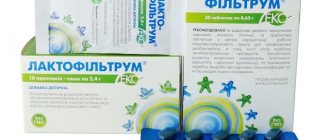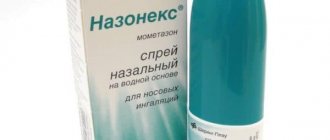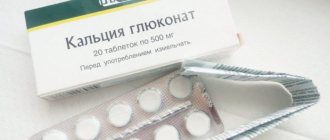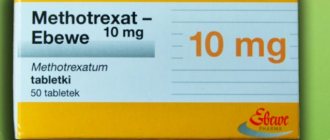Allergists rarely prescribe Prednisolone for allergies, because this drug has a pronounced antiseptic and antiallergic effect. The medication is one of the hormonal drugs that are recommended only in extreme situations. Prednisolone for allergies is used when it is necessary to provide first aid to a person. If there is a chronic allergic reaction, then the medication is not prescribed. It is also not recommended for children, because prednisolone for allergies can slow down growth.
When is Prednisolone prescribed for allergies?
Hormones produced by the adrenal glands are called corticosteroids. Based on them, a synthetic drug Prednisolone was created, which has an anti-inflammatory effect. Effect of the product on the body: suppresses immune reactions, stops cell destruction, reduces the permeability of vascular cells to allergens.
The medicine is intended for the relief of acute allergic conditions. Indications for use of the drug:
- bronchial asthma;
- skin allergic reactions;
- severe allergic attacks;
- acute food allergy;
- anaphylactic shock;
- febrile pustular psoriasis;
- hives;
- diseases of the nose, ears, eyes caused by allergens;
- ichthyosis, skin infections;
- pityriasis rosea;
- vasculitis
Instructions for use of the drug
Contraindications to the use of the medication:
- stomach ulcer;
- diabetes;
- arterial hypertension;
- thrombophlebitis;
- psychosis of any form.
The drug is prescribed to pregnant and breastfeeding women with caution when dealing with life-threatening conditions. Prednisolone reduces immunity, so during treatment it may cause bacterial or fungal infections. Possible side effects of the medication:
- metabolic failure;
- slowing down the growth of the body;
- disruption of protein structure;
- steroid diabetes;
- violation of figure proportions;
- slowing down fat metabolism.

Prednisolone injections for allergies
For antishock therapy, intravenous injections of the solution are used. Adults are prescribed 30-90 mg of the drug per day, in critical situations - 300 mg. The medicine is administered slowly. In other options, intramuscular injections are used. For Quincke's edema, the solution is administered once.
Prednisolone cannot be diluted with other means; when repeated administration, a half-hour interval is maintained. The course lasts 3-5 days, then the patient is transferred to taking tablets. In severe bronchial asthma, breathing is restored after the first injection. Treatment lasts up to 3 days. Injections are given every other day in a double dose.
Pills
Prednisolone tablets are intended for internal use. Take the drug with plenty of water. The adult dose is 30 mg per day with a gradual decrease to 5 mg, divided into 5 doses. The course of treatment is 10-14 days.
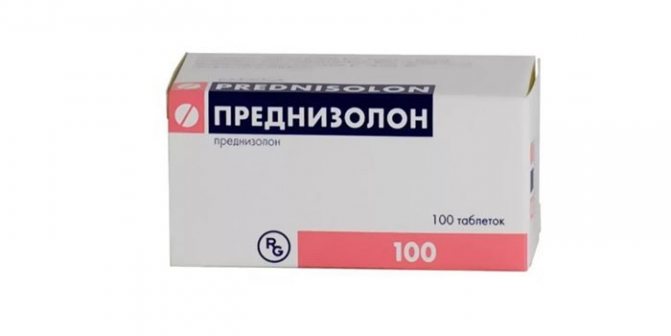
Outdoor use
Eye drops are used three times a day, 2 drops in each eye. Drops can also be instilled into the ears and nose for a course of 10 days. Ointment for external use is applied in a thin layer three times a day, and can be covered with a bandage. The course of treatment should not exceed 3 weeks. For urticaria, make a mask of ointment, applying it in a thick layer for 2-4 days.
Contraindications
Due to its toxicity, Prednisolone must be used with extreme caution. The drug is not prescribed if the patient is diagnosed with one of the diseases:
- Syphilis.
- Tuberculosis.
- Diabetes.
- Glaucoma.
- Acute infectious diseases, extensive fungal infection.
- Exacerbation of peptic ulcer disease.
- Hypertension.
- Thrombophlebitis.
Prednisolone is contraindicated in case of individual intolerance to active substances, during vaccination, or after surgery.
The group for limited use of the drug includes elderly patients.
Is Prednisolone used in pediatrics?
Prednisolone can be used for children with allergies, but with caution, because long-term use of the drug threatens disruption of protein synthesis and growth arrest. Hormonal medication is prescribed for serious indications, only under the supervision of a pediatrician. In acute conditions, the medicine is used in a minimal dose for a short period of time.
Tablets are prescribed from the age of five at a dose of 5 mg per 1 kg of body weight per day, divided into 5 doses. The daily maintenance dosage will be 300-600 mcg per 1 kg of body weight. The solution can be administered to children under one year of age at the rate of 1 mg per 1 kg of body weight. Children over one year old are administered 2 mg per 1 kg of weight.
Prednisolone for allergies: dosage form and indications for use
The drug Prednisolone is a potent hormonal drug that has a pronounced immunomodulatory, anti-inflammatory and antihistamine therapeutic effect.
It is also capable of increasing the effect of taking other drugs of this therapeutic nature. The attending physician must decide which form of Prednisolone to use to treat a child or adult for allergies in each individual case, depending on the indications and the advanced state of the patient’s condition. Moreover, according to reviews, tablets and injections of this medicine are most often used.
Today, Prednisolone for allergies has several different release forms, namely:
- Tablets for oral administration, which are packaged in blisters of 10 pcs. Children and adults can take them, but only after a doctor's permission.
- Ampoules for intramuscular injections. The dosage of such ampoules is 25 or 50 ml.
- Ointment for external application to affected areas of the skin.
- Drops to eliminate eye swelling.
Prednisolone itself is considered an artificial analogue of substances that are secreted by the body's adrenal glands. These substances are the hormones cortisone and hydrocortisone. Compared to such hormones, Prednisolone is much more active and helps a person cope with the manifestations of an allergic reaction many times faster. In addition to the pronounced antihistamine effect, this drug also has anti-shock, anti-inflammatory and antitoxic therapeutic effects.
Immediately after entering the body, Prednisolone is absorbed quite quickly and begins to exert its therapeutic effect. It can be traced in the blood within an hour after administration. Prednisolone can be prescribed for various manifestations of an allergic reaction, which are accompanied by damage to various body systems. Moreover, each of the drug release forms has its own indications.
Thus, eye drops should be used in the following cases:
- Allergic form of acute conjunctivitis, as well as inflammation of the eyelids.
- Inflammation of the mucous membrane of the eye and the cornea itself.
- Acute inflammation of the membrane of the eyeball.
- Restoring normal eye function after injury or surgery.
Prednisolone in injections, ointments or tablets is indicated for the following patient conditions:
- Bronchial asthma, which arose as a direct consequence of an allergic reaction in the body.
- Various skin manifestations of allergies in the form of rash, hives, redness or itching. The medicine is also approved for use in allergic eczema and dermatitis.
- A state of shock accompanied by a sharp decrease in blood pressure.
- Acute form of pancreatitis.
Due to the increased toxicity of Prednisolone, not all patients are allowed to use it. Thus, this drug is not prescribed for advanced forms of hypertension, acute endocarditis, and recent severe surgical interventions.
What causes hives
The cause of the disease in children is often an infectious disease (viral or bacterial). Sometimes food products become a provoking factor - eggs, nuts, fish, flour.
In children, hives may be a symptom of a more serious allergic disease and often require careful evaluation.
In adults, allergies often develop to medications (NSAIDs, antibiotics, codeine, etc.) and food products.
We recommend reading: Relief for hemorrhoids, instructions for using Relief ointment for hemorrhoids
Autoimmune diseases can also cause an abnormal reaction. In adults, mild cases do not require testing.
Features in children
The above symptoms of urticaria occur equally often in both children and adults, regardless of their age and the provoking agent. This is due to the general mechanisms of development of an allergic reaction - the permeability of small blood vessels increases, and swelling develops around them.
The photos below show that the manifestations of urticaria in adults and children are practically no different from each other. Urticaria rashes are so typical that a doctor only needs a photo of the patient to suspect an allergic disease. And if the rash itches a lot and appears very quickly, then the diagnosis is beyond doubt. But sometimes you can’t do without a special laboratory examination. Therefore, if you have a rash that is identical to the one shown in the photo, contact the clinic for help.
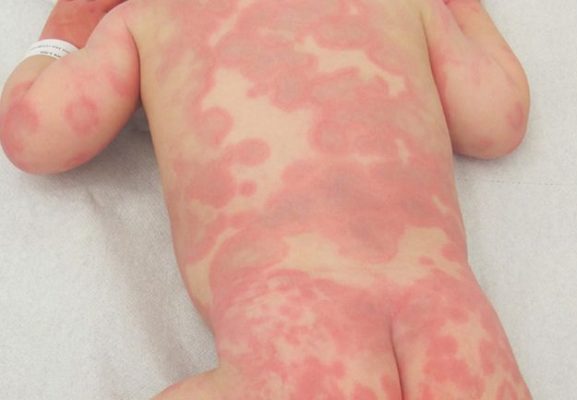
Urticaria is an allergic skin disease, the main symptom of which is a rash. The rash appears as raised, round or flat, light pinkish to red blisters with clear borders, resembling a nettle sting.
Prednisolone for allergies in children: features of administration
The dosage and duration of treatment with Prednisolone is selected for each patient individually, depending on the complexity of the condition and concomitant diseases. For the treatment of acute conditions and allergic reactions, adults are advised to take tablets per day.
- For children with allergies, prednisolone should be taken 2 tablets per day.
- The solution for intramuscular administration for the treatment of adults should be used in a daily dosage of 200 mg. In severe conditions, the dosage can be increased by 400 ml.
- Prednisolone for allergies in children, which is accompanied by bronchial asthma, should be administered 50 mg three times a day. At the same time, it is necessary to monitor the child’s condition and immediately contact a doctor if any deterioration occurs.
- Prednisolone in the form of eye drops should be used strictly according to indications. The drug should be instilled three times a day. The duration of therapy should not be longer than seven days.
Prednisolone should be used during pregnancy in the 1st and 2nd trimester only if the expected benefit to the mother exceeds the possible risks to the fetus.
This is justified by the fact that this medicine is very toxic and can negatively affect the development of the fetus. Therapy should be carried out exclusively under medical supervision. The standard adult dosage of the drug for a pregnant woman should be reduced by half. In the 3rd trimester, taking the drug is contraindicated, as well as during lactation, since the active substance Prednisolone can pass into breast milk. In the modern pharmacological market, there are more than a dozen medicinal analogues of Prednisolone, which have a similar therapeutic effect.
Despite this, only a few of the most effective analogues of this medicine are identified - these are Antisolone, Nisolone, Precortalone. Before taking such medications, it is very important to consult a doctor about contraindications and dosage selection. The cost of Prednisolone largely depends on the specific place of sale and the form of release of the drug. Thus, on average, the price of Prednisolone tablets is 120 rubles. Today you can buy such a medicine in almost any pharmacy.
In order to better understand how effective Prednisolone is in eliminating allergic reactions, here are reviews from those people who have already tried this drug on themselves:
- Anna “I used Prednisolone for urticaria as prescribed by the attending physician. This antiallergic drug helped normalize my condition and eliminate acute manifestations of allergies. I was a little afraid to take it at first, because it’s still a hormone, but it didn’t cause me any serious side effects.”
- Daniil “Once treated children who suffered from acute allergic rhinitis with Prednisone. Then I liked the effect of the drug, because it was able to quickly relieve swelling and an allergic reaction. After that, as prescribed by the doctor, he himself used the corticosteroid Prednisolone for urticaria. Despite slight improvements in my condition, this medicine caused me severe side effects in the form of sleep disturbances, abdominal and head pain. I will no longer use Prednisolone for hives and other signs of allergies, because I am disappointed with its effect on the body and the lack of safety of taking it.”
- Daria “After developing shock due to acute allergies, I was prescribed Prednisolone. I can say with confidence that this drug helped not only improve my condition, but also literally saved my life, because due to a sharp decrease in pressure, I lost consciousness. Only Prednisolone brought my body back to life and stabilized the functioning of the body’s systems.”
The attending physician must decide which form of Prednisolone to use to treat a child or adult for allergies in each individual case, depending on the indications and the advanced state of the patient’s condition. Moreover, according to reviews, tablets and injections of this medicine are most often used.
Today, Prednisolone for allergies has several different release forms, namely:
- Tablets for oral administration, which are packaged in blisters of 10 pcs. Children and adults can take them, but only after a doctor's permission.
- Ampoules for intramuscular injections. The dosage of such ampoules is 25 or 50 ml.
- Ointment for external application to affected areas of the skin.
- Drops to eliminate eye swelling.
Prednisolone itself is considered an artificial analogue of substances that are secreted by the body's adrenal glands. These substances are the hormones cortisone and hydrocortisone. Compared to such hormones, Prednisolone is much more active and helps a person cope with the manifestations of an allergic reaction many times faster. In addition to the pronounced antihistamine effect, this drug also has anti-shock, anti-inflammatory and antitoxic therapeutic effects.
Prednisolone for allergies in children: features of administration
The dosage and duration of treatment with Prednisolone is selected for each patient individually, depending on the complexity of the condition and concomitant diseases. For the treatment of acute conditions and allergic reactions, adults are advised to take tablets per day.
- For children with allergies, prednisolone should be taken 2 tablets per day.
- The solution for intramuscular administration for the treatment of adults should be used in a daily dosage of 200 mg. In severe conditions, the dosage can be increased by 400 ml.
- Prednisolone for allergies in children, which is accompanied by bronchial asthma, should be administered 50 mg three times a day. At the same time, it is necessary to monitor the child’s condition and immediately contact a doctor if any deterioration occurs.
- Prednisolone in the form of eye drops should be used strictly according to indications. The drug should be instilled three times a day. The duration of therapy should not be longer than seven days.
Prednisolone should be used during pregnancy in the 1st and 2nd trimester only if the expected benefit to the mother exceeds the possible risks to the fetus.
This is justified by the fact that this medicine is very toxic and can negatively affect the development of the fetus. Therapy should be carried out exclusively under medical supervision. The standard adult dosage of the drug for a pregnant woman should be reduced by half. In the 3rd trimester, taking the drug is contraindicated, as well as during lactation, since the active substance Prednisolone can pass into breast milk. In the modern pharmacological market, there are more than a dozen medicinal analogues of Prednisolone, which have a similar therapeutic effect.
Despite this, only a few of the most effective analogues of this medicine are identified - these are Antisolone, Nisolone, Precortalone. Before taking such medications, it is very important to consult a doctor about contraindications and dosage selection. The cost of Prednisolone largely depends on the specific place of sale and the form of release of the drug. Thus, on average, the price of Prednisolone tablets is 120 rubles. Today you can buy such a medicine in almost any pharmacy.
In order to better understand how effective Prednisolone is in eliminating allergic reactions, here are reviews from those people who have already tried this drug on themselves:
- Anna “I used Prednisolone for urticaria as prescribed by the attending physician. This antiallergic drug helped normalize my condition and eliminate acute manifestations of allergies. I was a little afraid to take it at first, because it’s still a hormone, but it didn’t cause me any serious side effects.”
- Daniil “Once treated children who suffered from acute allergic rhinitis with Prednisone. Then I liked the effect of the drug, because it was able to quickly relieve swelling and an allergic reaction. After that, as prescribed by the doctor, he himself used the corticosteroid Prednisolone for urticaria. Despite slight improvements in my condition, this medicine caused me severe side effects in the form of sleep disturbances, abdominal and head pain. I will no longer use Prednisolone for hives and other signs of allergies, because I am disappointed with its effect on the body and the lack of safety of taking it.”
- Daria “After developing shock due to acute allergies, I was prescribed Prednisolone. I can say with confidence that this drug helped not only improve my condition, but also literally saved my life, because due to a sharp decrease in pressure, I lost consciousness. Only Prednisolone brought my body back to life and stabilized the functioning of the body’s systems.”
Signs
The rash appears quickly in one area of the body and can spread to other areas. Swellings are single or merge into large groups. Urticaria rashes can occur within a few minutes after the action of the provoking factor. They often persist for up to 24 hours in the acute form and several weeks in the chronic form.
Sometimes hives blisters disappear on their own within a few hours, leaving no marks on the skin. This is due to the fact that urticaria affects only the most superficial layers of the epidermis.
In the photo you can see what urticaria looks like. Rashes can appear on any part of the skin of the body. As a rule, they are not dangerous. Particular care should be taken when hives appear on the face and throat, which can result in swelling of the upper respiratory tract and even death.
An anaphylactic reaction is very rare, but you need to be careful about it. Call your doctor immediately if your face and lips begin to swell, you experience difficulty breathing, or you feel dizzy.
Another typical symptom is very intense itching. It may appear before the rash and persist after it disappears. Due to the presence of severe itching, typical scratch marks are almost always present in the area of the rash, especially in children.
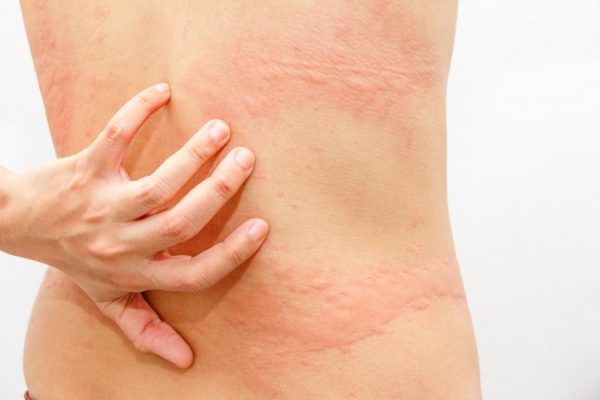
In severe cases, other unpleasant manifestations may appear:
- general weakness;
- increased body temperature;
- headache;
- pain in joints and stomach.
Sometimes hives blisters disappear on their own within a few hours, leaving no marks on the skin. This is due to the fact that urticaria affects only the most superficial layers of the epidermis.
